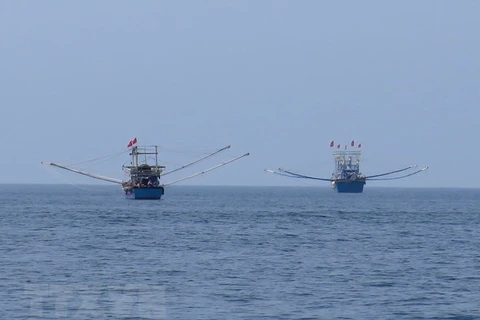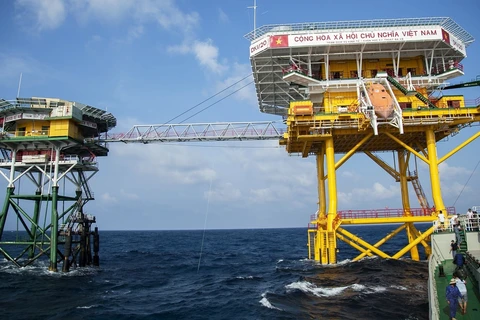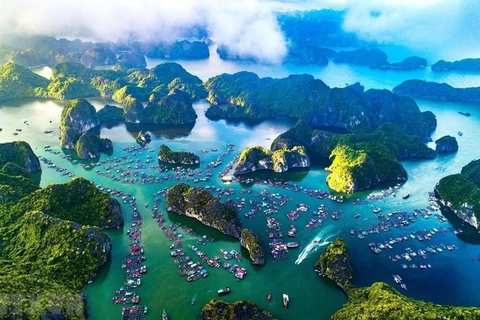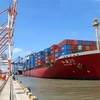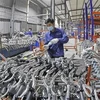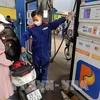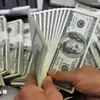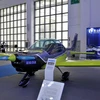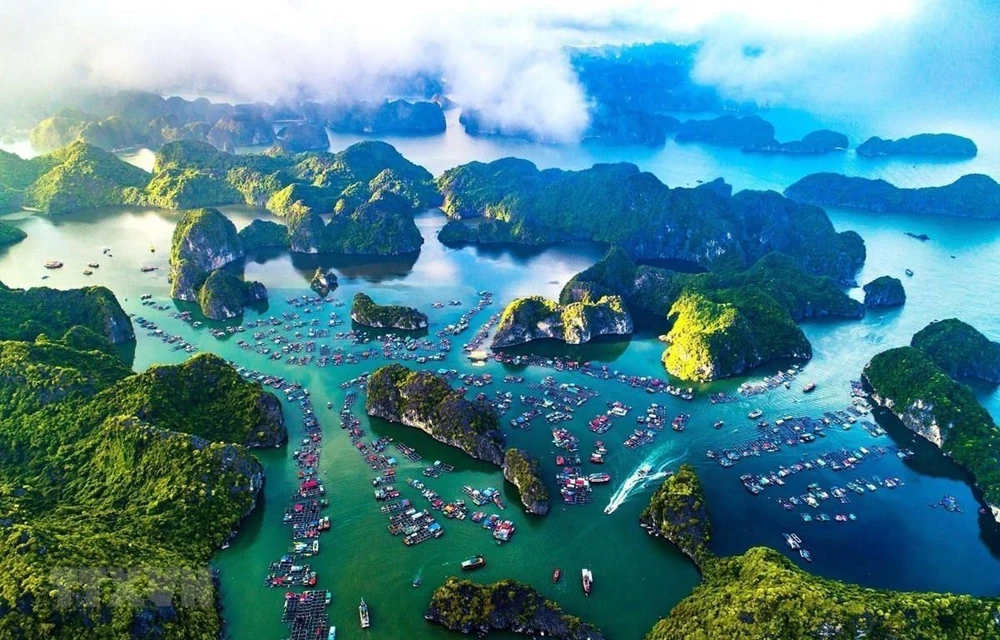
Hanoi (VNA) - The maritime economy should be guided towards sustainable development with a view to achieving “net zero” emissions by 2050. This is the commitment of Vietnam and other countries at the 26th United Nations Climate Change Conference of the Parties (COP 26) in Glasgow, Scotland in November last year.
With a coastline of some 3,260 kilometres, boasting abundant wave energy with strong ocean currents and some of the largest wind volume in Southeast Asia, Vietnam should promote its potential for clean electricity. This is an opportunity for Vietnam to concretize its “net zero” emission commitment by 2050.
This is one among five policy recommendations given in the “Blue Economy Scenarios for Vietnam” report, released on May 12 by the Vietnam Administration of Seas and Islands (VASI) under the Ministry of Natural Resources and Environment, and the United Nations Development Programme (UNDP).
“The Blue Economy Scenarios for Vietnam” report covers six major sectors, including fisheries, renewable energy, oil and gas, tourism, transport, environment, and the ecosystem.
UNDP Resident Representative in Vietnam Caitlin Wiesen said Vietnam has huge potential for aquaculture, marine renewable energy, especially offshore wind, biodiversity ecosystem services and tourism.
She suggested the country speed up maritime spatial planning and roll out policies to make use of the potential.
Research studies show that blue scenarios bring about higher interests than basic ones in terms of GDP contributions by economic sectors.
Ta Dinh Thi, Vice Chairman of the National Assembly's Committee on Science, Technology and Environment, said the report is valuable for managers, policymakers, scientists and those who are interested in this sphere.
Vietnam’s 28 coastal cities and provinces account for more than 50 percent of the national population, and make up to 60 percent of the national GDP.
Given impacts of the COVID-19 pandemic, the coastal and sea-based economic sectors have played an increasingly important role in recovering socio-economic activities and spurring the country’s economic growth.
The report also offers recommendations to promote the maritime economy in Vietnam.
The report suggests Vietnam expand its ocean renewable energy by 10,000 MW by 2030, 4,500 MW of which are near-shore wind power (mostly in the Mekong Delta region), and 5,500 MW offshore wind power (mostly in south central localities).
Regarding fisheries and aquaculture, Vietnam is advised to reduce its seafood catches to sustainable amounts of around 2.7 million tonnes a year by cutting exploitation by 2 percent each year, while maintaining areas of aquaculture.
The report recommended Vietnam enhance growth of foreign tourist arrivals by 8-10 percent a year and domestic ones 5-6 percent by 2030. Impacts of climate change and sea level rise should be included in tourism planning.
Ocean cargo transportation should increase 20.6 percent by 2030, with international transportation reaching 787 million tones and domestic transportation to 289 million tonnes.
The “Blue economy” is an economic term linked to exploitation and conservation of the maritime environment and is sometimes used as a synonym for “sustainable ocean-based economy”. There is, however, no consensus on the exact definition and the field of application depends on organization that uses it. The UN first introduced “blue economy” at a conference in 2012 and underlined sustainable management, based on the argument that marine ecosystems are more productive when they are healthy. This is backed up by scientific findings, showing that the earth’s resources are limited and that greenhouse gases are damaging the planet. Furthermore, pollution, unsustainable fishing, habitat destruction etc. harm the marine life and are increasing day by day.
The “blue” scenario developed for ecosystems demonstrated that the ecosystem value, and in some cases the total area, of crucial habitats such as mangroves, seagrass, coral reefs, and lagoons could increase. Thus, the marine economic expansion should be accompanied by a focus on maintaining or enhancing environmental quality.
Box: Vietnam has a favourable geographical position for the sea-based economy with more than 3,260 km of coastline spanning 28 provinces and cities. Coastal provinces and cities contribute about 47-48 percent of the country's gross domestic product (GDP). The marine economic sectors contribute about 20-22 percent of GDP.
Key marine economic sectors in Vietnam include marine renewable energy, oil and gas marine resources, aquaculture and fisheries, coastal and marine tourism, marine transportation and environment, biodiversity and ecosystem services./.

